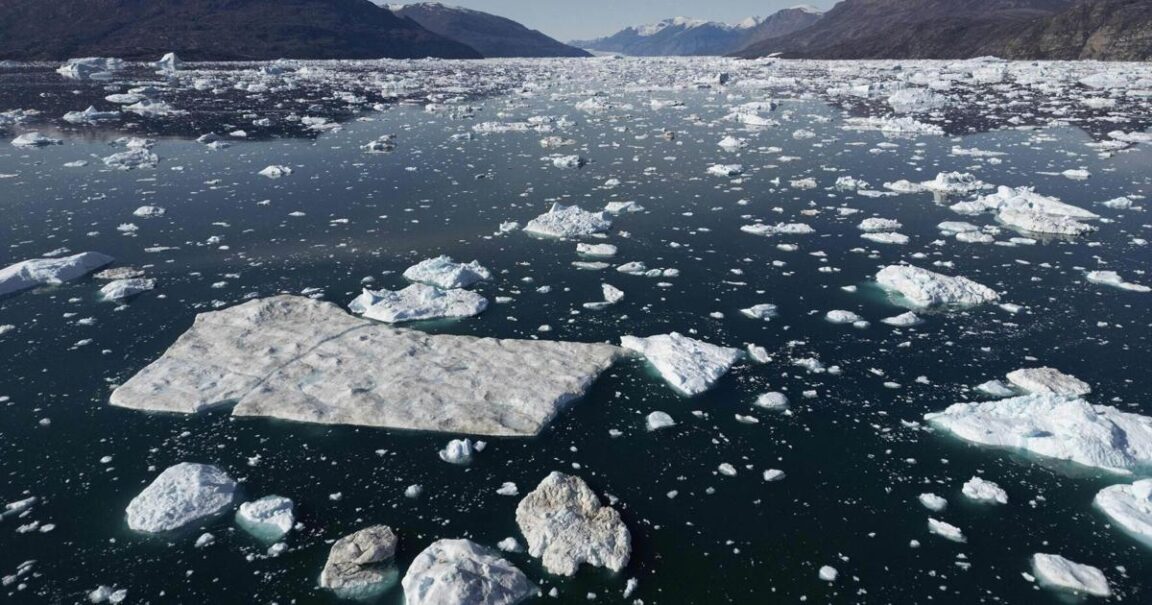
Greenland’s Mega-Tsunami: A Natural Disaster Beyond Understanding
In 2017, a colossal landslide in Greenland triggered a mega-tsunami with waves reaching an unimaginable 650 feet in height. This catastrophic event not only reshaped the landscape but left scientists grappling with something inexplicable. As the dust settled and data was analyzed, it became clear that the events following the tsunami held mysteries that have yet to be fully explained.
The wave, which struck Greenland’s west coast, destroyed coastal communities, wiped out habitats, and sparked global attention. But as experts studied the aftermath, they encountered anomalies that defied traditional geological explanations. What should have been a straightforward natural disaster led to unanswered questions, sparking a new frontier in tsunami and landslide research.
This article delves deep into the mega-tsunami’s origins, the peculiarities that followed, and why this event is crucial for understanding future natural disasters. Keep reading to discover the full story behind Greenland’s 650-foot wave and the mysteries still surrounding it.
The Massive Landslide: Triggering a 650-Foot Mega-Tsunami
The Chain of Events Leading to the Tsunami
The landslide occurred in the Karrat Fjord, a region in Greenland known for its steep, rocky cliffs and glacial formations. The weight of these glaciers, combined with erosion, eventually led to the collapse of a massive chunk of rock. As it plummeted into the fjord’s waters, the energy released caused a ripple effect that culminated in a mega-tsunami.
Wave Impact: The Destructive Power
When the rock hit the water, it displaced enough to create a wave towering over 650 feet. This staggering height is almost four times taller than the iconic Statue of Liberty. The tsunami decimated the nearby settlement of Nuugaatsiaq, resulting in loss of life and leaving dozens displaced.
Immediate Aftermath
Authorities responded swiftly, sending rescue teams and geologists to assess the damage and search for survivors. Despite their efforts, many homes and lives were lost to the sea. The tsunami’s devastation was undeniable, but it wasn’t until experts dug deeper into the data that the true mystery began to emerge. This wasn’t just a natural disaster; something far more puzzling had occurred.
The Inexplicable Aftermath: What Science Can’t Explain
Initial Geological Findings
As the initial shock of the tsunami passed, scientists began piecing together the sequence of events that led to the mega-tsunami. Data from seismic sensors, satellite images, and field studies indicated that the landslide should have generated a tsunami, but something about the scale and energy of the wave was baffling.
Unusual Patterns in Seismic Data
When studying the seismic data, researchers noticed discrepancies. The force of the wave didn’t align with the landslide’s expected energy output. Something had amplified the tsunami’s power. Was it the shape of the fjord, the rock composition, or an unknown geological factor? Despite thorough analysis, no conclusive answers have been found.
Climate Change: A Possible Contributor?
One theory links the event to climate change. As Greenland’s glaciers melt, they destabilize the land around them. Rising global temperatures may have expedited the process that led to the landslide. However, this theory doesn’t fully explain the intensity of the tsunami itself, leaving researchers to continue their search for answers.
For more about the relationship between climate change and natural disasters, read our guide to climate change’s impact on ocean levels.
The Human and Environmental Toll: Devastation Beyond Measure

Human Casualties and Displacement
The small community of Nuugaatsiaq bore the brunt of the tsunami’s force. At least four people lost their lives, while many others were injured or displaced. Homes, infrastructure, and livelihoods were swept away in mere moments. Recovery efforts were swift but challenging, as many survivors lost not just their homes but their entire way of life.
Environmental Impact: A Changed Landscape
The tsunami permanently altered Greenland’s west coast. Shorelines were reshaped, ecosystems disrupted, and marine life displaced. The event also created concerns about future landslides in the region, as the rapid erosion of cliffs due to warming temperatures could trigger more large-scale events.
If you’re interested in how natural disasters can affect coastal communities, check out our article on how coastal erosion threatens small island nations.
New Frontiers in Research: Investigating the Greenland Mega-Tsunami
Ongoing Scientific Studies
In the years following the event, researchers have focused on understanding how such a large tsunami could have occurred and whether similar events might happen again. Some studies have hypothesized that the fjord’s unique topography may have played a role in amplifying the wave’s energy. Others are investigating how other regions vulnerable to landslides could face similar risks.
Lessons for Future Disaster Preparedness
This event has led to a renewed focus on early warning systems and preparedness in areas prone to landslides and tsunamis. Greenland, in particular, is now on high alert, as scientists warn that as glaciers continue to melt, the likelihood of future events grows.
For an in-depth guide on disaster preparedness, refer to our comprehensive disaster risk management strategies page.
What Happens Next: Could It Happen Again?
The Risk of Future Mega-Tsunamis
Greenland’s landscape, characterized by its glaciers and fjords, is inherently unstable. While it’s impossible to predict when the next landslide might occur, scientists agree that the warming climate is accelerating the conditions necessary for similar events.
Preparing for the Unknown
Local authorities in Greenland are taking steps to mitigate future disasters by installing monitoring systems and improving early warning protocols. However, the unpredictability of such events makes it clear that more research is needed to understand the full scope of the risks involved.
Learn more about tsunami preparedness and warning systems to stay informed.
Conclusion: Greenland’s Mega-Tsunami and the Mysteries Left Behind
The 650-foot mega-tsunami that hit Greenland in 2017 stands as a chilling reminder of the power of natural disasters. While the causes of the landslide and the initial wave are well understood, the mysteries that followed continue to puzzle scientists.
As climate change reshapes landscapes across the world, it’s crucial to continue researching events like Greenland’s mega-tsunami to better prepare for the future. This disaster not only changed the lives of those affected but also opened new questions about the unpredictability of our planet’s forces.

